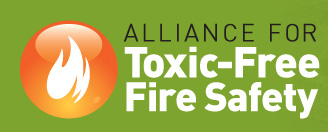  |
|||||||||||||||||||||||||||||||||||||||||||||||||||||||||||||||||||||||||||||||||||||||||||||||||||||||||||||||||||||||||||||||||||||||||||||||||||||||||||||||||||||||||||||||||||||||||||||||||||||||||||||||||||||||||||||||||||||||||||||||||||||||||||||||||||||||||||||||||||||||||||||||||||||||||||||||||||||||
In ProductsShocking Lab Results from New Baby Product Testing Study!In 2010 and 2011, volunteers from across the U.S. donated samples from 101 baby products to be tested for chemical flame retardants. Volunteers submitted cubic-inch pieces of polyurethane foam, which they cut from their baby product, wrapped in aluminum foil, sealed within two plastic bags, and mailed for analysis at a Duke University research laboratory . That analysis found more than 80 % of products tested contained hazardous or untested chemical flame retardants. Read the article, Identification of Flame Retardants in Polyurethane Foam Collected from Baby Products, in Environmental Science & Technology Journal, online, May 18, 2011 on the new study here. Study Highlights
Consumer Advocates and Environmental Health Groups single out an antiquated California regulation, Technical Bulletin 117 (TB 117), as the reason for widespread use of flame retardants in baby products containing polyurethane foam. Any such product must meet TB 117 in order to be sold in California, and product makers tend to manufacture to the most difficult standard. Therefore, baby products purchased outside California may also be treated with flame retardants. Because of California TB 117, likely Americans everywhere are being subject to chronic exposure to these chemicals. Many products purchased outside California had a TB 117-compliant label and were treated with chemical flame retardants, according to findings from the new Baby Product study. Study findings also suggest that products containing polyurethane foam sold within California are almost certain to carry these chemicals.
Read a full summary of the science here. Other Products with Chemical Flame Retardants include:
The Case Against HFRsMany Halogenated Flame Retardants persist in the environment, build up in our bodies, and are toxic. The Stockholm Convention on Persistent Organic Pollutants (POPs), a binding treaty among 172 countries worldwide, has banned 21 chemicals over environmental and public health concerns; all of them are halogenated. Two of them are flame retardants. Twelve US states have banned two prominent halogenated flame retardants and five states have banned a third. Even still, it’s nearly impossible to avoid them; if you’re pregnant — you’re being exposed for two. They are in planes, trains, and automobiles. They’re in home heating, ventilation and cooling systems. They’re in vacuum cleaners, Christmas tree lights, couches, chairs, nursing pillows, changing pads, crib wedges, cell phones, handheld electronic games, and the list goes on and on. Marketplace and government actions have led to the phase out of some of the most widely used flame retardant chemicals. Manufacturers agreed to end production of three of their most pervasively used flame retardants (penta and octa-BDE in 2004 and deca-BDE by 2013). But according to some product testing research, such as the Baby Product Study of 2011, equally hazardous flame retardants have taken their place. For instance, a chemical removed from children’s pajamas in the 1970s has resurfaced in child care products and replaced penta-BDE in furniture. Some replacements have so little health and environmental data behind them it is hard to say what their impacts might be. Yet researchers routinely find these chemicals in our homes. What’s most shocking, perhaps, is that the fire prevention value of current use of flame retardants in products is actually questionable.1 The Failure of Federal LawMany people are surprised to learn that the US EPA does not have the authority to demand routine testing on chemicals before they’re marketed. In truth, EPA can only demand pre-market testing or regulate production when it has compelling evidence that it is needed. There is no requirement that chemical ingredients be listed on product labels. Consumers must contact product makers to find answers or visit websites devoted to chemical testing.2 Two types of infant car seats, one containing fire retardants and one without, could be side-by-side on a store shelf, and you would not be able to tell which one contained hazardous flame retardants and which one did not. Even products claiming to be PBDE-free may contain other equally hazardous chemicals. Studies of infant cord blood show that newborns have chemical flame retardants in them at birth. Under current conditions, they will continue to be exposed throughout their childhood. HFRs can disturb human and animal development at very low doses during critical windows of development.3 Yet research shows children have the highest levels of flame retardants in their bodies compared to older members of their household. Your baby’s changing pad is not a likely ignition source. So why is it treated with chemical flame retardants in the first place?Many products are treated to meet the State of California’s Technical Bulletin 117, or TB117.4 Some companies go beyond the California standard and apply flame retardants to all products to meet TB117, regardless of where in the U.S. they are sold. This suggests Americans are likely and unnecessarily exposed to HFRs from coast to coast. Products that meet TB117 carry this label: NOTICE: This article meets the Because HFRs are not chemically bound to the products that contain them they escape over the life of the product, incorporating into dust and absorbed through human breath and indigestion. (If a product contains polyurethan foam – a petroleum product – it is likely to contain HFRs.) When you adjust a computer screen with an enclosure that contains HFRs, they come off on your hands. When you sit on your couch or place a newborn on nursing pillow, some amount of chemicals escape in a puff of air and settle into household dust. Couches made in 2004 or before, will likely contain pentaBDE, now banned in 172 countries and out of production in the US. Thousands of couch cushions treated with penta are now, as garbage, recycled into carpet padding for new installation in homes. Meanwhile, a popular replacement flame retardant to penta is chlorinated tris, the infamous chemical removed from kid’s PJs in the 70s. Testing of household dust samples found both penta and chlorinated tris.5 There is really no way to eliminate exposure without addressing the root sources. It’s helpful to wash hands after handling a product with flame retardants, before eating and frequently throughout the day. Regular damp mopping also will help reduce exposure to contaminated dust. But in truth, corporate behavior has to change in order to best protect everyone. Ask companies how they achieve flammability standards. Do they add halogenated flame retardants? If so, ask them how they choose which chemicals to use and what health and safety criteria they depend on to determine which chemicals they’ll use? Ask them to publicly disclose this information to all consumers. Be persistent! You have a right to know! It’s amazing how responsive a company can become after hearing from just a few customers. So make some calls and let us know what you learned. Together we can empower others with information!
Coming Soon: Revealing new data on HFRs in couches & chairs!
1. According to Vyto Babrauskas, the author of Fire Behavior of Upholstered Furniture and Mattresses, (William Andrew Publishing, Norwich NY 2001), the only textbook ever written on furniture flammability, TB117 is “so weak that it does not achieve any useful fire safety purpose." 2. Healthy Stuff Database: www.healthystuff.org 3. The Endocrinie Disruption Exchange: http://www.endocrinedisruption.com/prenatal.criticalwindows.press.factsheet.php 4.Green Science Policy Institute: http://www.greensciencepolicy.org/furniture-flammability-standards 5. Elevated House Dust and Serum Concentrations of PBDEs in California: Unintended Consequences of Furniture Flammability Standards? Environmental Sciences & technlogy October 1, 2008 http://pubs.acs.org/doi/abs/10.1021/es801792z
|
|||||||||||||||||||||||||||||||||||||||||||||||||||||||||||||||||||||||||||||||||||||||||||||||||||||||||||||||||||||||||||||||||||||||||||||||||||||||||||||||||||||||||||||||||||||||||||||||||||||||||||||||||||||||||||||||||||||||||||||||||||||||||||||||||||||||||||||||||||||||||||||||||||||||||||||||||||||||





